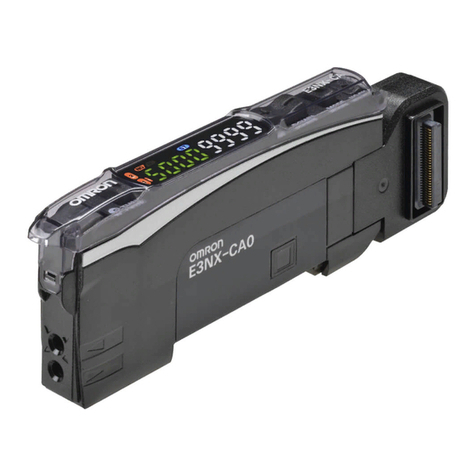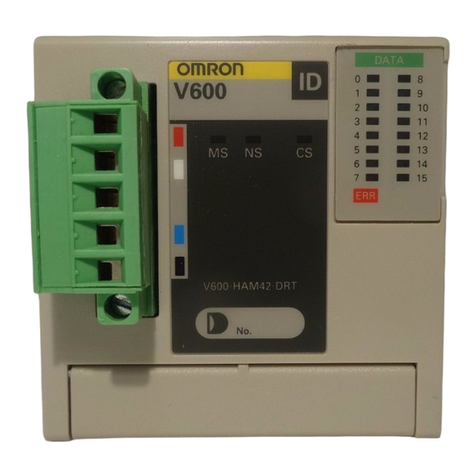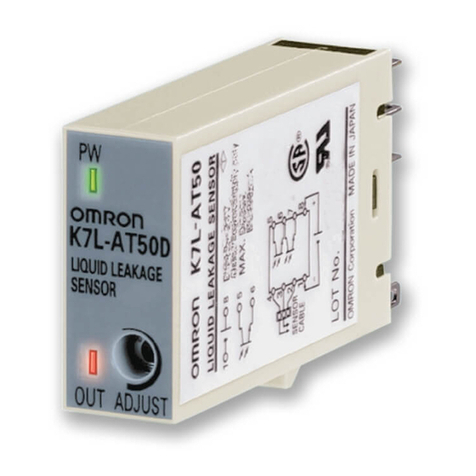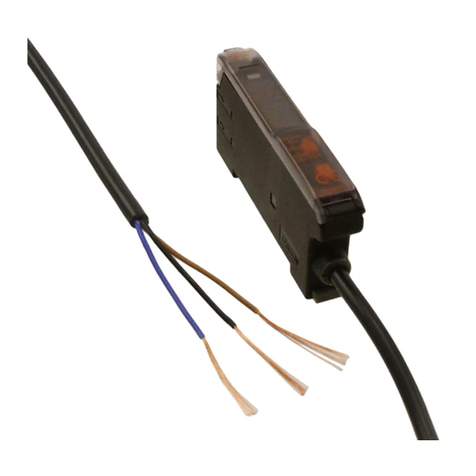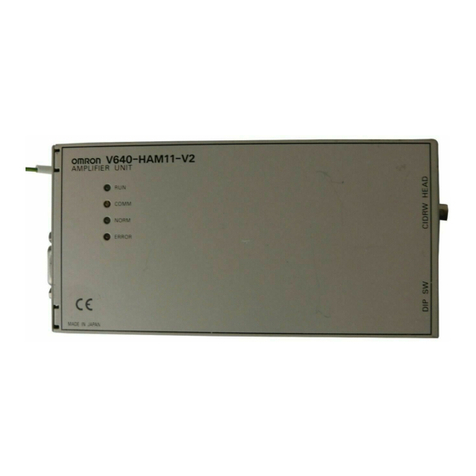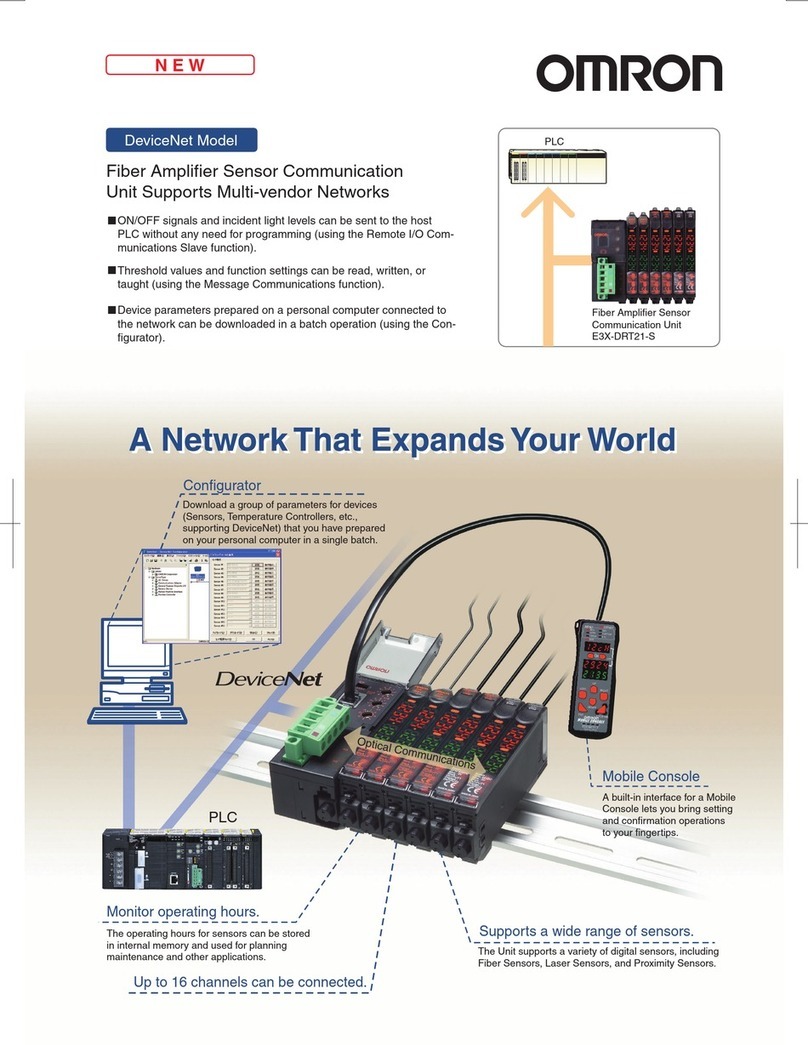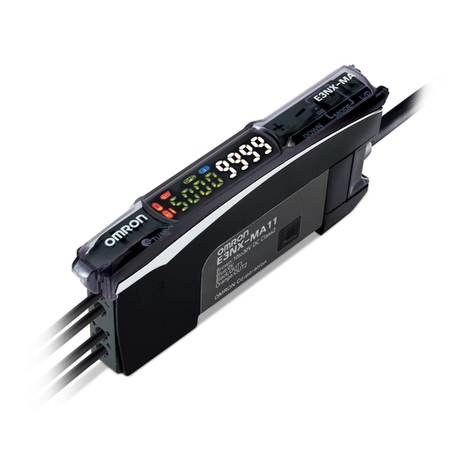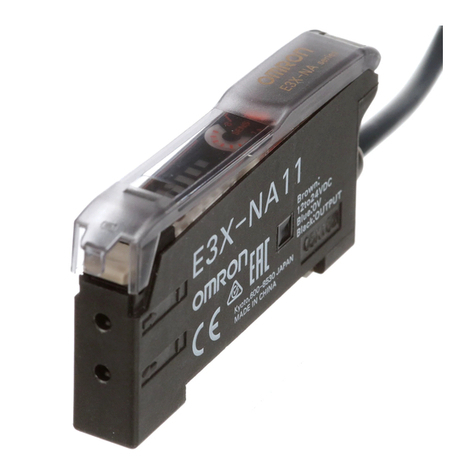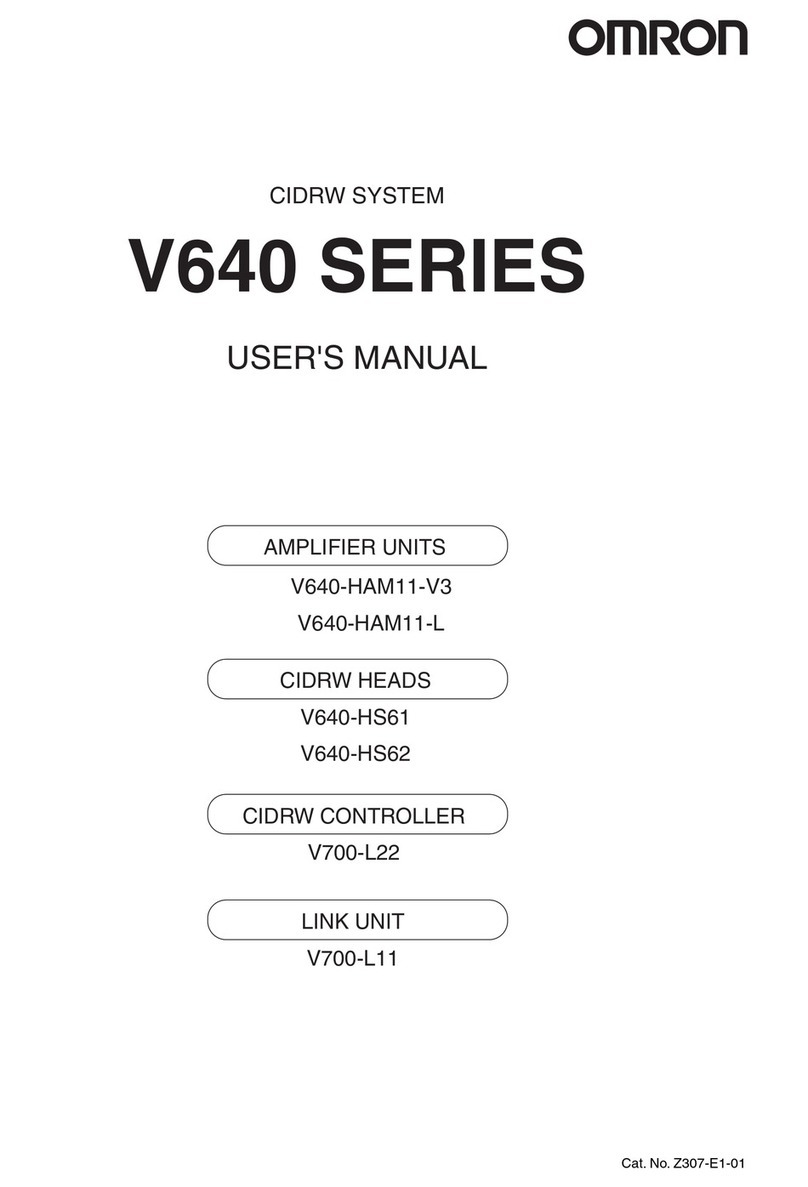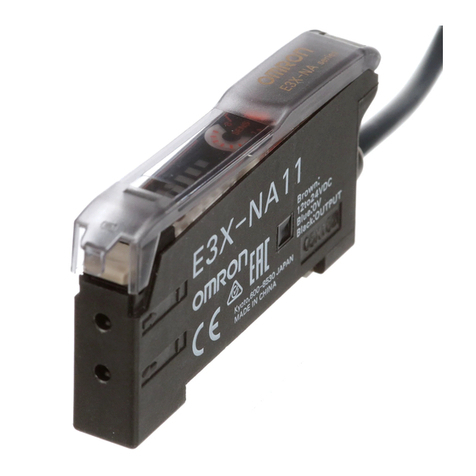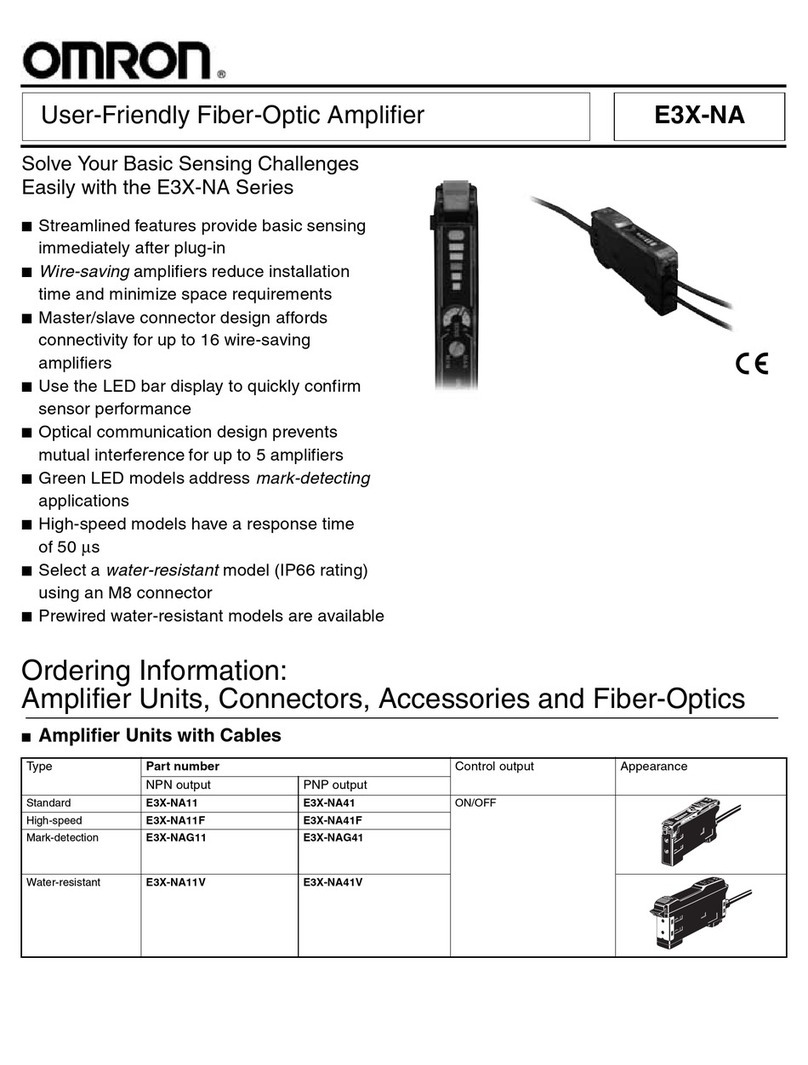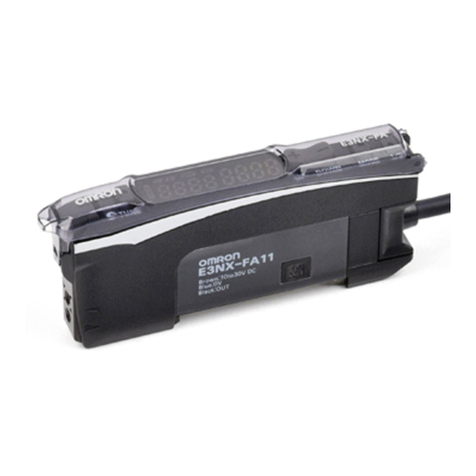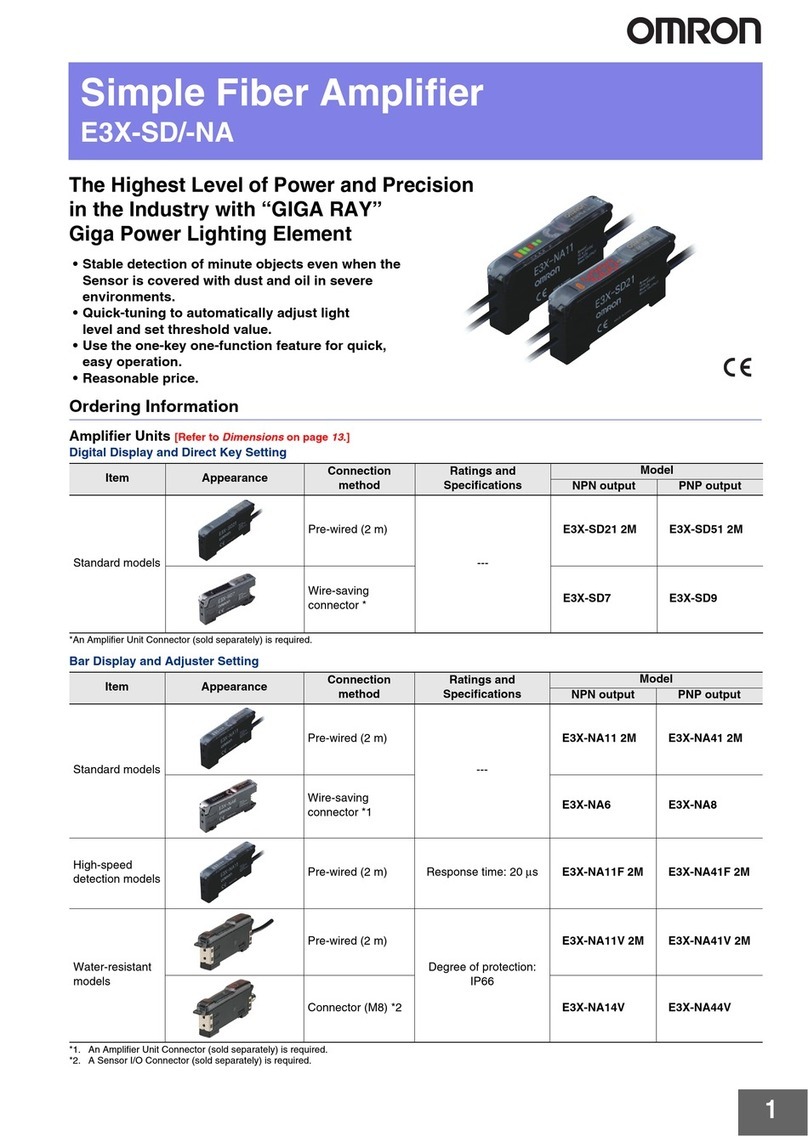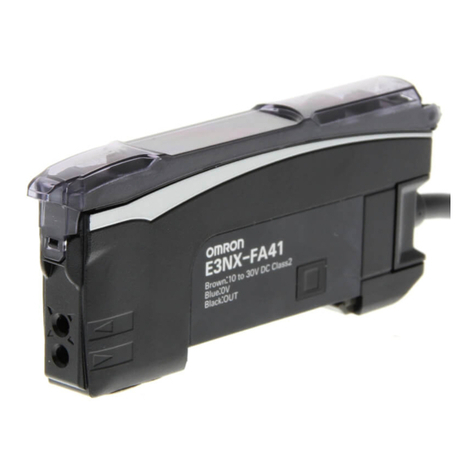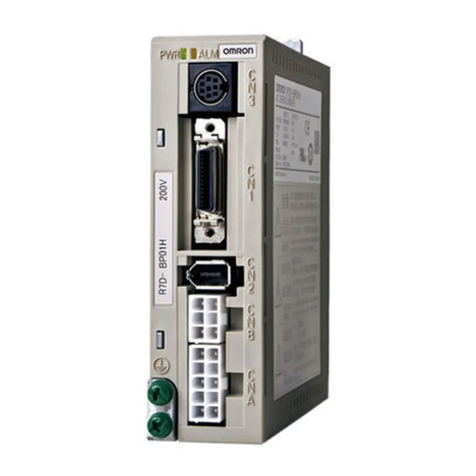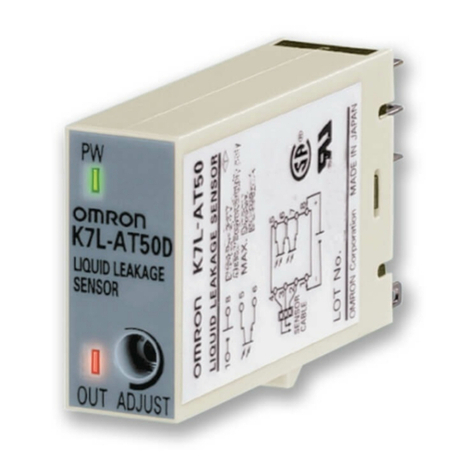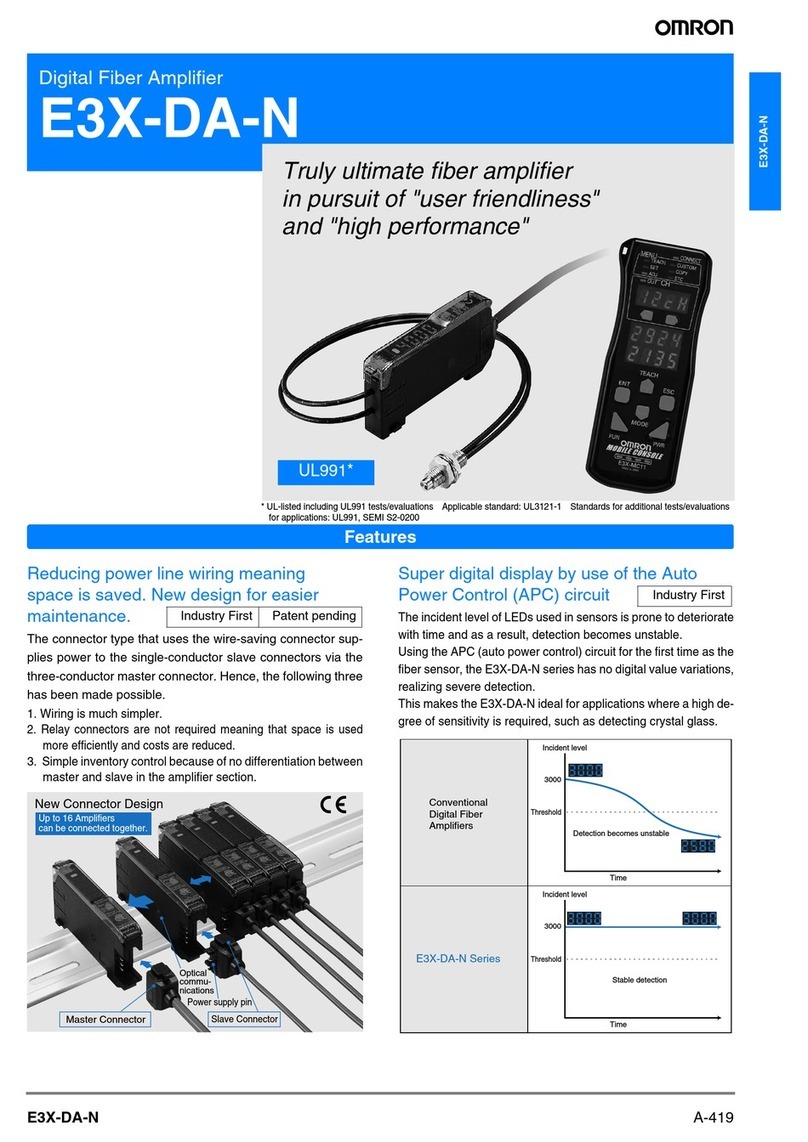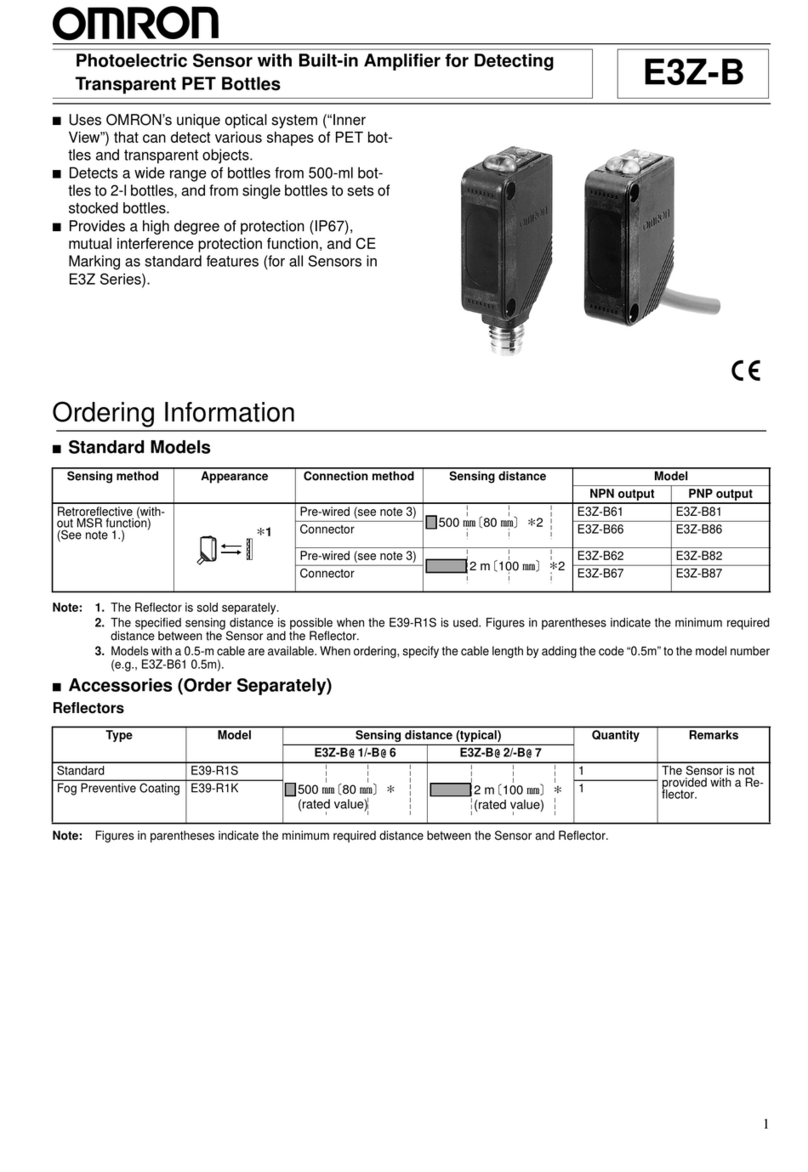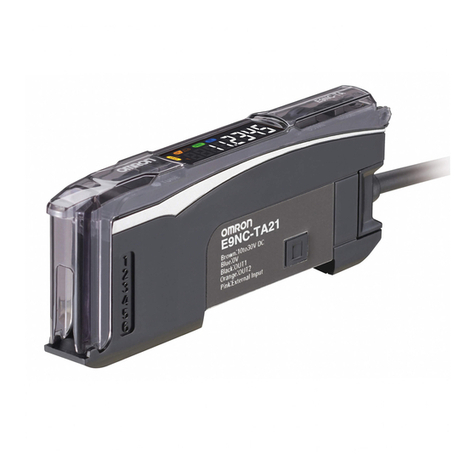
E3X-DA-N E3X-DA-N
3
Specifications
JAMPLIFIER RATINGS/CHARACTERISTICS
Description Digital output Analog/digital output Mark-detection M8 connector,
Prewired Connector Prewired Connector Prewired digital output
Output type NPN output E3X-DA11-N E3X-DA6 E3X-DA21-N E3X-DA7 E3X-DAB11-N E3X-DA14V
PNP output E3X-DA41-N E3X-DA8 E3X-DA51-N E3X-DA9 --- E3X-DA44V
Light source (wavelength) Red LED (660 nm) Blue LED
(470 nm) Red LED (660 nm)
Power supply voltage 12 to 24 VDC ±10%, ripple (p-p) 10% max.
Power Normal 960 mW max. (current consumption: 40 mA max. at power supply voltage of 24 VDC)
consumption Economy mode 720 mW max. (current consumption: 30 mA max. at power supply voltage of 24 VDC)
Digital display
not lit 600 mW max. (current consumption: 25 mA max. at power supply voltage of 24 VDC)
Control output ON/OFF output NPN/PNP (depends on model) open collector; load cur-
rent: 50 mA max.; residual voltage: 1 V max. NPN open col-
lector; load cur-
rent: 50 mA
max.; residual
voltage: 1 V
max.
NPN/PNP
(depends on
model) open col-
lector; load current:
50 mA max.; resid-
ual voltage: 1 V
max.
Analog output --- Load 1 to 5 VDC,
10 kΩmin. --- ---
Operation
mode Switch
selectable Light-ON/Dark-ON operation
Circuit protection Reverse polarity, output short-circuit, mutual interference prevention
Response time High-speed 250 µs for operation and reset respectively
by mode Standard 1 ms for operation and reset respectively
Long distance 4 ms for operation and reset respectively
Sensitivity setting Teaching or manual method
Functions Timer function OFF-delay timer range: 0 to 20 ms (set in 1 ms increments); 20 to 200 ms (set in 5 ms increments)
Automatic
power control
(APC)
Fiber-optic current digital control --- Fiber-optic current
digital control
Zero-reset Display can be reset to zero when required (negative values can be displayed).
Initial reset Settings can be returned to defaults as required.
Monitor focus --- Upper and lower limits can
be set as required for every
100 digital values.
--- ---
Display Function (color) Operation indicator (orange), 7-segment digital incident level display (red), 7-segment digital inci-
dent level percentage display (red), threshold and excess gain 2-color indication bar (green and
red), 7-segment digital threshold display (red)
Timing Normal/peak-hold/bottom-hold, program selectable
Orientation Normal/reverse, program selectable
Optical axis adjustment Optical axis adjustment possible (flashing function)
Ambient illumination Illumination intensity at light-intercepting surface:
Incandescent lamp: 10,000 lx max.; Sunlight: 20,000 lx max.
Ambient
temperature Operating Groups of 1 to 3 Amplifiers: –25°C to 55°C (–13°F to 131°F)
Groups of 4 to11 Amplifiers: –25°C to 50°C (–13°F to 122°F)
Groups of 12 to16 Amplifiers: –25°C to 45°C (–13°F to 113°F)
with no icing or condensation
Storage –30°C to 70°C (–22°F to 158°F) with no icing or condensation
Ambient humidity Operating and storage: 35% to 85% with no condensation
Insulation resistance 20 MΩmin. at 500 VDC
Dielectric strength 1,000 VAC at 50/60 Hz for 1 minute
Vibration resistance 10 to 55 Hz with a 1.5-mm double amplitude for 2 hrs each in X, Y and Z directions
(This table continues on the next page.)
